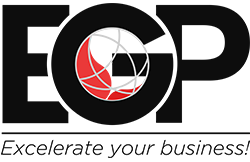Complexity is an unavoidable consequence of development and change. And, even though the 2020s began with huge disruption from COVID-19, Finance Leaders face continuous and diversified difficulties such as quickly changing markets, operational complexity, and responsibility to meet stakeholder expectations.
That is why finance teams no longer have a choice – we must lead at breakneck speed.
How do rapidly finance teams lead? And what measures are needed to make the jump to fast-paced leadership and release the real potential of finance?
Conquering Complexity to Lead at Speed
Leading at speed necessitates those businesses first understand their basic finance operations before tackling more value-added activities. Finance transformation initiatives often begin in one of two areas: (1) financial closure and consolidation of (2) planning, budgeting, and forecasting – although some Finance programs tackle both of these areas at the same time.
In any event, once these two fundamental processes are in place, Finance teams may easily and logically add on performance reporting before moving on to the more complex process of financial signaling. An example maturity model (see figure 1) showing these stages is provided below, along with a brief description of each step.
Financial Close and Consolidation– Since this procedure supports the organization’s “book of record” reporting, it is critical to understand. Regardless of whether the business is private or publicly traded, reporting to external stakeholders must be accurate, timely, and by US GAAP, IFRS, or other local requirements. These rules apply to financial statement reporting, as well as statutory reporting and regulatory filings.
Budgeting, planning, and forecasting– This method aids in the establishment of corporate goals, objectives, and resource allocations. As a result, overcoming the process is important to maintaining a solid collaboration and alignment between Finance and Operations in terms of recruiting, capital investments, and reaching revenue, expense, and profit targets. Furthermore, in today’s unpredictable and frequently disruptive economic climate, using agile planning approaches – such as quarterly, monthly, or more frequent driver-based rolling projections – is fast becoming the standard. bodies.
Performance reporting entails providing periodic (usually a month- or quarter-end) financial and operating outcomes to the executive team, board of directors, and managers across the organization. These findings aid in the decision-making of stakeholders. Ultimately, performance reporting can take numerous forms, depending on the demands of the stakeholders.
- Graphical dashboards and scorecards for executives and senior management
- Standard financial statements, board books, and presentations for board members
- Product line or divisional P&Ls for line-of-business management
- Profitability analysis by product, customer, or channel for product managers, customer service, and channel managers
- Ad-hoc analysis and scenario modeling capabilities for Finance and Operations analysts
Financial signaling is a method that elevates performance reporting to a new level. Monthly and quarterly financial and operating data are critical for stakeholders and can help them make strategic decisions. However, in many situations, those reporting intervals are insufficient. Given the pace and volatility of today’s economic and commercial climate, many sectors find that waiting until the end of the month or quarter to assess data and respond is insufficient.
Decision-makers in fast-paced sectors want more frequent access to financial and operational indicators – such as weekly or even daily – to allow more agile decision-making that can influence results at month- or quarter-end. Unfortunately, the “virtual close” or “continuous close,” in which the books are closed every day and consolidated financial data are instantaneously communicated with stakeholders, is just not practical. It’s even more difficult when the transactional data is spread across various GL/ERP, CRM, HCM, and other systems.
Action-Oriented Leadership
OneStream Software has assisted over 550 businesses worldwide and across sectors in overcoming the challenges of financial closure, consolidation, reporting, planning, forecasting, analytics, and financial signaling. As a consequence, their Finance teams have been given the authority to lead at a faster pace and to enable more effective decision-making.
Here are some samples of how these companies have benefited from OneStream’s unified platform:
- Finance helped leaders and managers to make more timely and informed choices by providing them with faster and more accurate information.
- By automating regular operations and procedures and decreasing time spent on system administration, the Finance team’s productivity increased and more time was spent on value-added work.
- Increased business agility — allowing managers across the company to capitalize on new possibilities while mitigating risks.
- Revenue growth, expense reductions, and improved overall business performance
- CPM applications’ time, effort, and total cost of ownership (TCO) were reduced by reducing their IT footprint and migrating to the cloud.
Photo by Randy Tarampi on Unsplash



